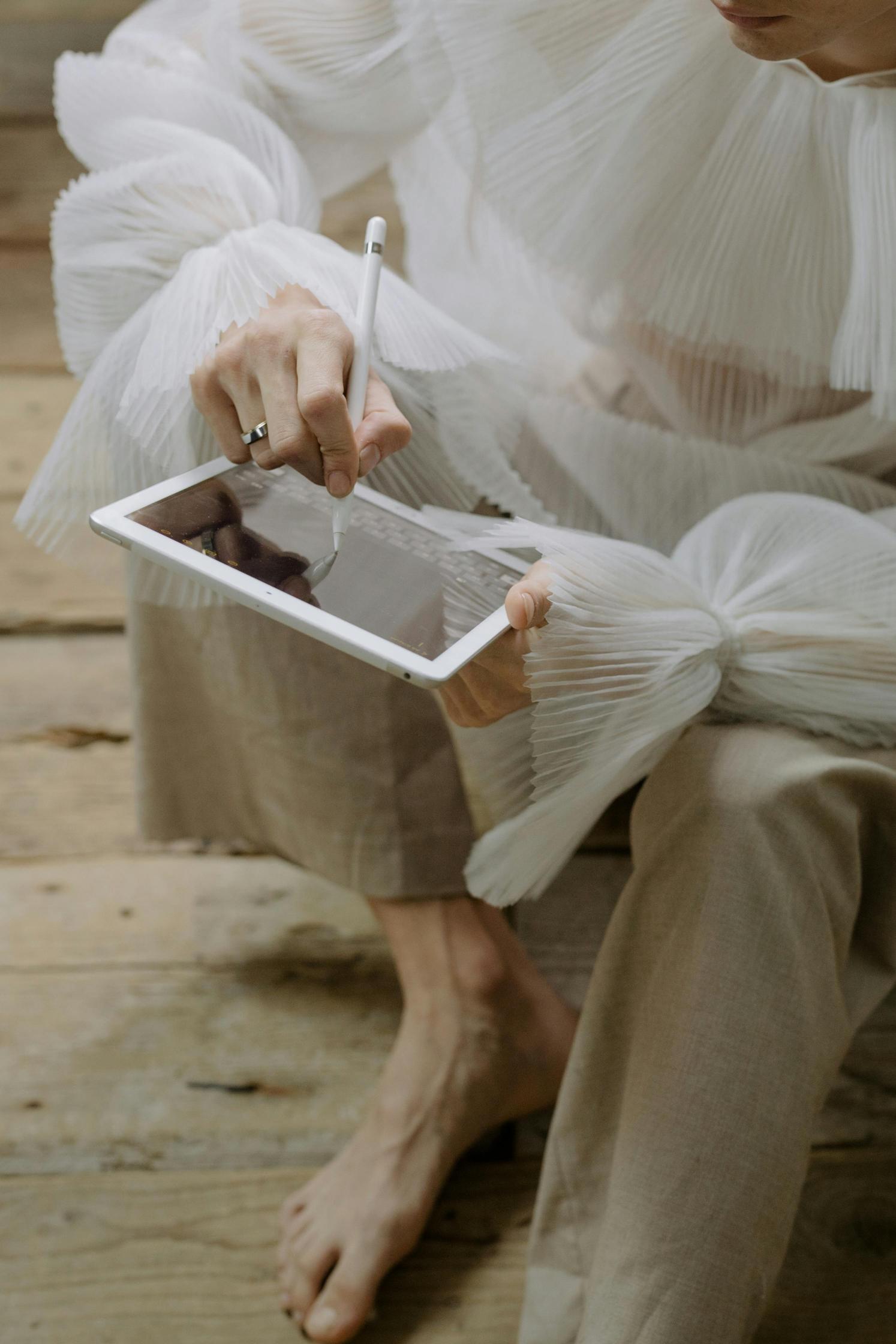Welcome to our comprehensive review of Sketch for UI/UX design, the go-to tool for many professionals in the digital design space. In this blog, we delve into the features that make Sketch an indispensable asset for creators aiming to bring their user interface and user experience designs to life. Whether you’re a seasoned designer or just starting out, our exploration of Sketch’s capabilities will provide valuable insights into how this software can enhance your design workflow.
Join us as we unpack the power of Sketch and discover why it’s a favorite among design experts.
User interface design capabilities in sketch

User Interface Design Capabilities in SketchWhen venturing into the vast expanse of digital design tools, Sketch quickly stands out as a mainstay for UI/UX professionals. Not merely an application but a pivotal cog in the machinery of interface design, Sketch has been adeptly fine-tuned to handle the nuanced demands of crafting user experiences. It’s akin to being handed a Swiss Army knife when you’re accustomed to using a single-blade pocket knife; the breadth and versatility are both striking and empowering.
At the heart of Sketch’s prowess lies its vector-based editing capabilities, allowing for a myriad of adjustments without compromising on the crispness and quality of the visuals. Designers revel in the ease with which they can manipulate shapes, icons, and other elements, ensuring pixel-perfect precision that is paramount in UI design.
Layer styles and text styles add another layer of sophistication, letting creatives define and apply consistent looks across multiple elements, a feat that feels almost as satisfying as slipping into your favorite pair of jeans—a perfect fit every time. Furthermore, the intuitive nature of Sketch is showcased through its Symbols feature.
Imagine constructing a design so modular that each component can be replicated and tweaked without disrupting the whole. Symbols serve as these reusable assets, standing at the ready for when uniformity is key, yet each instance remains open to individual customization. And in the world of iterative design, where feedback loops and rapid changes are as inevitable as the changing of seasons, Sketch’s artboards and exporting options ensure that transitioning from wireframe to high-fidelity prototype is seamless, akin to a magician’s deft sleight of hand.
With Sketch, it’s not about drawing the line between possible and impossible; it’s about creating it, curving it, and connecting it with the user in mind.
User experience enhancements with sketch features

### User Experience Enhancements with Sketch FeaturesSketch has established itself as an indispensable tool in the esoteric realm of UI/UX design, offering a plethora of features that cater to the meticulous requirements of designing intuitive and visually appealing interfaces. The application’s robust capabilities are not just a matter of chance; they are the result of a careful and deliberate effort to refine the user experience design process.
Let’s unfurl some of the Sketch features that have unequivocally elevated the art and science of UI/UX design. One of the standout features of Sketch is its vector-based workflow. This allows designers to scale their creations without losing quality, an absolute necessity when ensuring that designs are crisp across multiple device resolutions.
Additionally, Sketch’s mirroring feature is a godsend for those seeking to test designs on different screen sizes in real-time. Consider, for instance, the ease with which one adjusts a UI element on their desktop and, within seconds, observes the responsive change reflected on a connected mobile device. Such interactivity exemplifies the kind of instant feedback loop that is vital in the iterative design process.
Moving on, Sketch has deeply integrated the symbol system, which is a game-changer for maintaining consistency throughout a project. A “symbol” in Sketch acts as a master component that can be reused across the design with all instances being updated simultaneously when changes are made to the master.
This not only saves time but also ensures uniformity. Imagine a designer has to update a recurring button – a single edit to the master symbol cascades that change throughout the entire project, a stark contrast to the tedium of manual updates.
Moreover, Sketch’s robust plugin ecosystem further enhances its capabilities, enabling designers to customize their workflow with tools tailored specifically for their needs – from content generation to responsive design testing. This trifecta of features – vector-based design, real-time mirroring, and powerful symbol management, augmented by a flourishing plugin ecosystem, shows that Sketch is not just a tool; it’s a thoughtful companion that adapts to the evolving landscape of UI/UX design. As these features work in concert, they exemplify Sketch’s ethos of creating a seamless and less frictional experience for designers, ultimately resulting in digital products that delight and engage users.
With such a suite of features at their disposal, designers are equipped to transcend the ordinary, crafting experiences that are not only functional but also resonate on a deeper aesthetic level.
Sketch in the design workflow: integration and collaboration

Sketch in the Design Workflow: Integration and CollaborationWhen it comes to UI/UX design, the name 'Sketch’ often surfaces with the buoyancy of a life-saver in a sea of endless digital tool options. This vector-based design tool has surged in popularity amongst designers for its intuitive interface and collaborative features. In an industry where design workflow efficiency is paramount, Sketch has positioned itself as the go-to tool for seamless integration and team collaboration.
Emphasizing real-time collaboration, Sketch has revolutionized the design process by introducing 'Libraries’—a feature comparable to a treasure chest for designers. With the ability to share symbols, text styles, and color palettes across various documents, Libraries ensure that consistency is maintained across an entire product, gracing multiple designers with the capability to work simultaneously on individual components of a single, unified interface.
Whether it’s a bustling startup or a mammoth tech enterprise, the shared Libraries functionality means that teams can stay on the same page, literally and figuratively. Furthermore, Sketch doesn’t stop there.
Integration with numerous plugins and apps propels its functionality into the stratosphere. Popular among these is the ability to connect to prototyping tools such as InVision or Marvel, which allows designers to leap from static screens to interactive prototypes with the finesse of a trapeze artist. This smooth transition is key when showcasing potential flows and interactions to stakeholders, ensuring the vision for the product is not lost in translation.
With Sketch, the design process transforms into a symphony of tools and talents playing in harmony, resulting in an intuitive and impactful user experience. With Sketch at the helm, the design workflow becomes a tableau of integration and collaboration.
It fosters an environment where ideas can be iterated rapidly, feedback is woven into the very fabric of the design process, and every stroke of creativity is synergistically aligned with the project’s goals. Sketch isn’t just a tool; it’s the catalyst in the alchemy of turning user interface dreams into user experience reality.
Final thoughts: the pros and cons of using sketch for ui/ux design
Final Thoughts: The Pros and Cons of Using Sketch for UI/UX DesignSketch, as an established vector-based design tool, has weathered the storm of a rapidly evolving UI/UX landscape, managing to earn a special place in the toolboxes of design professionals worldwide. With its user-friendly interface and focus on screen design, it has become a mainstay for those who sculpt the digital environments we navigate daily.
However, like any tool, it’s not without its brushstrokes of brilliance and smudges of inconvenience. On the luminous side of the canvas, Sketch’s vector-based approach is a godsend for crafting crisp, scalable designs that are critical in the responsive age where one’s canvas may stretch from a smartwatch to an expansive desktop monitor. Its symbols feature—allowing designers to reuse elements across a project—ensures efficiency and consistency, a boon for those navigating the labyrinthine task of creating a coherent user experience.
Add to this the shared Libraries, and you’ve got a collaborative ecosystem that considerably streamlines workflow, especially when multiple artists are painting on the same tapestry. Nevertheless, no portrait is painted without a few drops of paint astray. Sketch only supports macOS, leaving the Windows-wielding portion of the design guild to look elsewhere—a significant barrier in the quest for universal tool adoption.
While third-party plugins can dramatically extend Sketch’s capabilities, this reliance can sometimes feel like sending a carrier pigeon in an age of instant messaging; it gets the job done, but there’s a whisper of awkward dependence. Additionally, its one-time purchase model contrasts the subscription-based services that offer continual, seamless updates, which could leave Sketch beholders feeling as if their tool is aging, not like a fine wine, but more like a forgotten cheese.
It’s these pros and cons that make Sketch a topic of heated debate in UI/UX salons. For some, it’s the chisel that cannot be unseated, while for others, it’s an admired but ultimately unsuitable instrument. What remains unvarnished truth is that Sketch has certainly etched its mark on the world of digital design.
Whether it continues to be the preferred tool, or slowly becomes a relic of design history, is a story yet to be unwound by the spools of the industry’s ever-ticking clock.
Nasza rekomendacja video
Summary
In summary, Sketch has established itself as a formidable tool for UI/UX design, offering an intuitive vector-based interface that caters to the specific needs of digital designers. With its robust features, such as Symbols and Prototyping, Sketch streamlines the design process, facilitating collaboration and efficiency.
Despite facing competition, it remains a top choice for professionals seeking precision and ease in crafting user interfaces.
FAQ
How does Sketch facilitate the UI/UX design process for both individual designers and teams?
Sketch streamlines the UI/UX design process by offering a vector-based platform that is intuitive and focused on screen design, enabling individual designers to quickly create and iterate on visuals. For teams, Sketch provides robust collaboration features, such as shared libraries and real-time editing, which facilitate seamless communication and consistency across different members’ work, ensuring a cohesive design experience.
What are the key features of Sketch that make it stand out from other UI/UX design tools available in the market?
Sketch is renowned for its vector-based interface which allows for flexible and scalable designs, a user-friendly and intuitive interface that streamlines the design process, and a strong focus on collaboration with features like shared libraries and real-time co-editing. Additionally, its extensive plugin ecosystem and integration with other tools and services make it highly customizable and adaptable to various workflows, setting it apart from many other UI/UX design tools.
How does Sketch’s vector-based interface benefit the creation and scaling of high-fidelity designs?
Sketch’s vector-based interface allows for the creation of clean, scalable designs that remain sharp and detailed at any size. This is essential for high-fidelity design work where precision and adaptability to various screen sizes and resolutions are crucial. Moreover, vectors are inherently lightweight, which improves the performance and efficiency of the design process.
Can Sketch integrate with other tools and platforms, and how does this affect the workflow of a UI/UX designer?
Yes, Sketch can integrate with a variety of other tools and platforms through plugins and add-ons, enhancing the workflow for UI/UX designers by enabling seamless collaboration, easy asset handoff, and efficient design system management. These integrations can connect Sketch to prototyping tools, developer handoff platforms, version control systems, and more, streamlining the design process from ideation to implementation.
What are the pros and cons of using Sketch for prototyping and collaborating on design projects?
Pros of using Sketch for prototyping include its vector-based interface which is ideal for high-fidelity UI/UX design, a vast array of plugins for extended functionality, and seamless integration with other tools and services for collaboration. However, Sketch is only available for macOS, which limits accessibility for teams with diverse operating systems, and it can be less suitable for prototyping complex interactions or animations compared to other tools specifically built for interactive prototyping.
How has Sketch evolved over the years to meet the changing demands of the UI/UX design industry?
Over the years, Sketch has evolved significantly to meet the changing demands of the UI/UX design industry by introducing features such as collaborative tools for real-time design sharing and feedback, an extensive plugin ecosystem for enhanced functionality, and improved vector editing capabilities for more sophisticated design work. Additionally, Sketch has focused on streamlining workflows with symbols and responsive design features, allowing designers to create flexible, reusable elements and layouts that adapt to different screen sizes and devices.
